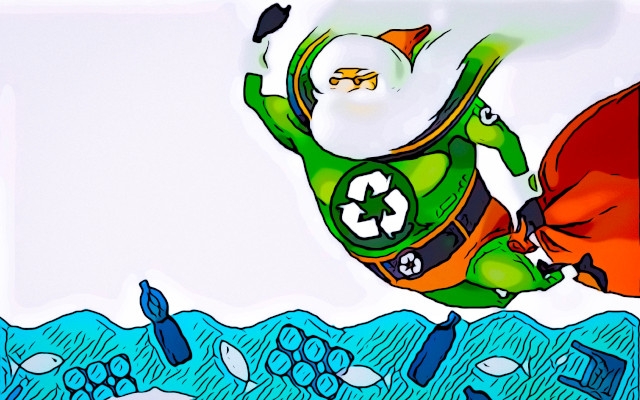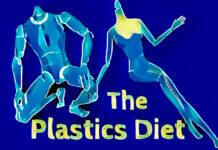On 19.12.18, a compromise on the ‘single-use plastics’ directive was finally reached between the European Parliament, Council and Commission. A significant step forward, without hiding some critical issues.
‘
Single-Use Plastics
Directive
‘
,
SUP
The ‘Single-Use Plastics Directive‘, SUP, was finalized on 19.12.18 through an agreement between the Strasbourg Assembly (rapporteur Hon. Frédérique Ries, ALDE Group, Belgium), the Austrian Council presidency and the European Commission. The measure is part of the broader context of EU environmental policies, which saw a major development in 2018 with the approval of the ‘circular economy package‘.
‘When you get to a situation where one year you bring home fish in a plastic bag and the next year you bring that same bag home in a fish, you have to work hard and fast.‘ (Karmenu Vella, Commissioner for Environment, Maritime Affairs and Fisheries)
The directive on single-use plastics
differs from the general regulatory framework in that it takes drastic action against those materials and packaging that fall among the ten most frequently found polluting products on European beaches
. In fact, the new regulations introduce a ban on the use of some ‘disposable’ items, for which alternatives in different materials exist. Also providing for specific measures to reduce the use of the most widely dispersed plastic products in the environment. (1)
UAS, single-use plastic items banned
The main objective
of the directive is to reduce the amounts of plastic waste
. Prevention, that is, reducing consumption, is at the top of the waste hierarchy. In second place is preparation for reuse, starting as early as the design stage of items and packaging. This is followed by recycling, which can allow recycled materials to be used for a variety of uses, including in construction as well as for making new objects. Indi recovery for energy and, finally, disposal.
Several plastic items will be banned in the EU, thanks to the ‘SUP Directive‘. Since they can be made of different materials with less environmental impact. Precisely:

Plastic cutlery (knives, forks, spoons and chopsticks),

plastic plates,

plastic straws,

Expanded polystyrene food containers, such as boxes for
fast-food
(with or without covers, for food intended for immediate consumption, on-site or take-out, without further preparation such as heating, cooking to boiling),

Expanded polystyrene beverage containers and cups,


Plastic sticks with cotton.
Caps and lids will be allowed as long as they remain attached to their respective containers following consumption of the products. An indispensable step-though opposed by Big Food (e.g., Coca-Cola, Danone, Nestlé, and PepsiCo) according to which the costs would outweigh the benefits-to prevent pollution and increase the recycling rate. (2)
SUP, consumption reduction and other measures on other plastic items
Member states will have to take the necessary measures to achieve a measurable reduction in the consumption of plastic food containers (e.g. fast-food and take-away boxes) and beverages, including caps and lids.
On the recycling front , a 90 percent collection rate for plastic bottles must be achieved by 2029. The in PET beverage bottles will have to come made from recycled plastic to the extent of at least 25 percent from 2025, 30 percent from 2030. (3)
Wet wipes, i.e., pre-moistened wipes for personal hygiene or household use, will have to bear a marking on the packaging designed to inform consumers about the presence of plastic and the harm associated with dispersal in the environment.
Tobacco filters made of plastic materials, the second most frequently dispersed single-use plastic product in the environment, trigger an extended liability regime for manufacturers. Who will have to bear the costs of public systems for collecting butts, including infrastructure (e.g., dedicated containers, at public waste collection points). Cigarettes and other tobacco products with plastic filters will have to bear a special notice, such as wipes.
UAS, the critical issues
The ‘single-use plastics’ directive undoubtedly represents a success for the European legislature. For pioneering- second only to the United Kingdom (4)-in the discipline of a crucial environmental issue. And the unusual speed in its approval process. However, there is no shortage of critical issues, serious the first:
– Reduced consumption of food containers and cups. No binding targets have been set at the EU level, nor has any obligation to adopt targets been imposed on member states. Merely stating that the latter must ‘significantly reduce’ their consumption, leaving it vague and open-ended,
– Beverage container recycling collection target (90 percent). Delay of 4 years (from 2025, where an intermediate target of 77% was set instead, to 2029), compared with the original forecast,
– Caps and lids joined to beverage containers. Delay of 3 years, from 2021 to 2024
– arbitrariness granted to member states, which can choose whether to achieve the reduction in consumption or take other measures through voluntary agreements with industries. (5)
‘The new laws represent a significant first blow to the monster of plastic pollution. Their impact, however, depends on implementation by our national governments, which must immediately adopt ambitious targets.
We need to cut
single-use plastics and ensure that manufacturers pay for their pollution.
The public call
to stop plastic pollution is loud and loud, and it is unacceptable to ignore it.’ (Delphine Lévi Alvarès, European coordinator of the Break Free From Plastic movement)
Dario Dongo
Notes
(1) Mitigation of marine pollution is also addressed in the directive on port reception facilities for marine litter. On which an agreement between the European Parliament and the Council recently intervened
(2) The caps are indeed often found as separate waste from the bottles and are sometimes ingested in their entirety by aquatic fauna
(3) The recycling target is defined in terms of the overall annual average, for each member state
(5) Under EPR(extended producer responsibility).
Dario Dongo, lawyer and journalist, PhD in international food law, founder of WIISE (FARE - GIFT - Food Times) and Égalité.









